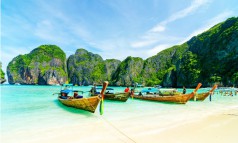



















Saturday, Feb 01, 2025 09:15 [IST]
Last Update: Friday, Jan 31, 2025 17:04 [IST]
The cultural economy has emerged as a transformative force in the global landscape, redefining economic growth beyond material production. It is now one of the fastest-growing sectors worldwide, encouraging employment, export revenues, and intellectual investments. More importantly, culture-based industries are shaping social identities, enhancing community cohesion, and influencing policy frameworks. For a small yet vibrant state like Sikkim, the cultural economy presents a unique opportunity to leverage its rich traditions, biodiversity, and indigenous knowledge systems for sustainable development.
At its core, the cultural economy thrives on human creativity and innovation. Unlike conventional industries, it generates value not just in monetary terms but also through its impact on social well-being and identity preservation. From traditional art forms to contemporary digital media, culture-driven economic activities have proven to be more environmentally sustainable while also fostering local pride and heritage conservation. Moreover, culture influences consumer behaviour, urban planning, and tourism, making it a powerful tool for regional development.
Globally, governments and policymakers recognize culture as an economic asset capable of revitalizing communities, attracting human capital, and improving quality of life. The integration of cultural industries into economic planning has led to new collaborations between artists, entrepreneurs, government agencies, and private investors, creating a dynamic ecosystem that goes beyond the realm of artistic expression.
Sikkim, with its unique ethnic diversity, rich folklore, traditional crafts, and deep-rooted spiritual heritage, is well-positioned to harness the benefits of the cultural economy. The state has already demonstrated its commitment to sustainability through its organic farming initiatives and eco-tourism projects. However, the potential of its cultural resources remains largely untapped.
The revival of traditional crafts such as Thangka painting, wood carving, and handwoven textiles can generate employment for local artisans while preserving endangered cultural practices. Establishing market linkages and digital platforms can further enhance their reach and economic viability. Sikkim’s festivals, monasteries, and indigenous storytelling traditions offer a rich cultural experience that can attract both domestic and international tourists. By investing in cultural infrastructure, such as museums and heritage villages, the state can amplify its tourism appeal while ensuring community participation.
Providing financial incentives, skill development programmes, and incubation centers for young artists, musicians, filmmakers, and writers can foster a thriving creative sector. Digital platforms can also be leveraged to showcase the state’s cultural content globally.
Introducing culture-based curricula in schools can instil a sense of identity and pride among the youth while equipping them with skills relevant to the creative economy. Partnerships with institutions specializing in arts and heritage conservation can further enhance this effort.
The cultural economy is more than an economic growth strategy; it is a means to preserve identity, strengthen communities, and promote sustainable development. For Sikkim, embracing this sector can lead to increased economic opportunities while safeguarding its unique heritage. With strategic investments and policy support, the state can position itself as a model for cultural sustainability and creative prosperity in the Himalayan region.
